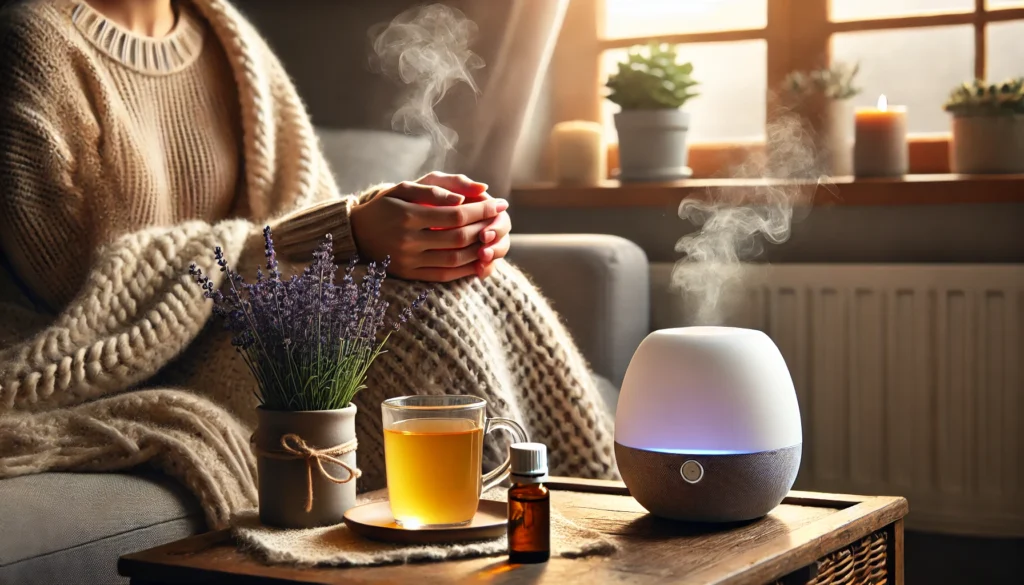n the heart of a bustling world, where stressors abound and mental health challenges are increasingly common, knowing how to help someone having a panic attack is more vital than ever. Panic attacks are sudden surges of overwhelming fear and anxiety that can leave individuals feeling paralyzed, breathless, and detached from reality. Witnessing someone experience such a crisis can be frightening and confusing, especially if you feel unsure about what to do when someone is having a panic attack. Yet, with the right knowledge, compassion, and tools, you can offer support that not only eases the moment but also contributes to their long-term healing and mental resilience.
You may also like: Best Herbal Alternatives to Anxiolytics: Natural Remedies for Anxiety Relief
Understanding Panic Attacks and Their Triggers
Panic attacks, while not life-threatening, are intense episodes of fear that often come on suddenly and without warning. They can last anywhere from a few minutes to over half an hour and may include symptoms such as chest pain, shortness of breath, dizziness, palpitations, and a sense of impending doom. These attacks may mimic symptoms of a heart attack, which can escalate fear and anxiety. Understanding what causes these episodes is a critical step in knowing how to help someone having a panic attack.
Triggers for panic attacks can vary widely. Some are rooted in trauma, while others may arise from chronic stress, hormonal imbalances, caffeine intake, or even genetic predisposition. People with generalized anxiety disorder, post-traumatic stress disorder, or major depressive disorder are more likely to experience panic attacks. In some cases, there are no identifiable triggers, which can leave the sufferer feeling even more vulnerable. This unpredictability underscores the importance of being prepared and knowledgeable about what to do when someone is having a panic attack.
Scientific studies suggest that panic attacks involve the dysregulation of the autonomic nervous system, particularly an overactive sympathetic response—the body’s “fight or flight” mechanism. Neurochemical imbalances, such as reduced levels of gamma-aminobutyric acid (GABA), can also contribute to heightened anxiety responses. With this foundational understanding, the path to offering meaningful support becomes clearer.

Recognizing the Signs of a Panic Attack
Being able to identify when someone is having a panic attack is the first and most crucial step in offering help. Common symptoms include rapid breathing (hyperventilation), increased heart rate, trembling, sweating, chest tightness, and feelings of choking or smothering. The person may also express irrational fears, appear confused or disoriented, or describe a sensation of detachment from their surroundings or themselves, a phenomenon known as derealization or depersonalization.
Despite the intensity of these symptoms, it is essential to remain calm and composed. Many people don’t know how to calm someone down from a panic attack, often responding with fear, urgency, or attempts to talk the person out of their experience. However, dismissive comments or pressure to “calm down” can inadvertently heighten distress. Instead, recognizing these signs and validating their experience lays the groundwork for effective, compassionate support.
One of the most overlooked aspects of panic attacks is their variability. Not all individuals will exhibit the same symptoms or respond to the same calming techniques. Therefore, a personalized, empathetic approach is necessary. Paying attention to body language, facial expressions, and verbal cues can help determine the severity and guide appropriate intervention.

Immediate Actions to Take During a Panic Attack
Once you’ve recognized that someone is having a panic attack, your next steps can significantly influence the outcome. The goal is to create a sense of safety, restore calm, and prevent escalation. First and foremost, speak in a soft, reassuring voice. Let them know that they are safe and that the feelings, though intense, will pass. Statements like “You’re not alone” or “I’m here with you” can provide immense comfort.
Guiding the person to focus on their breathing is often one of the most effective techniques. Encourage slow, deep breaths by modeling the behavior yourself. Counting breaths—such as inhaling for four counts, holding for four, and exhaling for four—can help regulate the autonomic nervous system and reduce hyperventilation. Some people find it helpful to breathe into a paper bag, although this should be done with caution and only if you are certain the symptoms are not cardiac-related.
Grounding techniques are another valuable tool. These might include asking the individual to name five things they can see, four they can touch, three they can hear, two they can smell, and one they can taste. This sensory-based method redirects attention away from the panic and into the present moment. When used appropriately, such techniques are indispensable for anyone wondering how to calm someone down from a panic attack.
Frequently Asked Questions (FAQ): Supporting Someone Through a Panic Attack
What should I avoid doing when trying to help someone during a panic attack?
Understanding what to avoid is just as important as knowing how to help someone having a panic attack. One common mistake is telling the person to “just relax” or “calm down,” which may feel dismissive and can worsen their distress. Another misstep is physically restraining them or crowding their space, especially if they appear disoriented. Instead of assuming control, focus on offering support without overwhelming them. To truly grasp what to do when someone is having a panic attack, it helps to observe, listen actively, and follow their lead in terms of how much interaction they can handle in that moment.
Can panic attacks happen during sleep, and how should I respond if they do?
Yes, nocturnal panic attacks can occur and often wake a person suddenly with intense fear, heart palpitations, and shortness of breath. If you’re sharing a space with someone and they wake up in distress, knowing how to calm someone down from a panic attack at night requires a gentle, non-stimulating approach. Avoid turning on bright lights or engaging in rapid conversation. Offer a comforting presence, perhaps guiding them through grounding techniques such as progressive muscle relaxation or deep breathing. It’s crucial to provide reassurance while maintaining a calm demeanor, especially when considering how to help someone having a panic attack that disrupts their sleep cycle.
Is it helpful to ask questions during a panic attack, or should I stay silent?
The answer depends on the individual’s level of responsiveness. In general, yes-no questions are more manageable than open-ended ones during a panic episode. When considering what to do when someone is having a panic attack, start by gently asking if they want you to stay or if they need space. If they are nonverbal or struggling to respond, continue offering verbal reassurance in a calm, rhythmic tone. Remember, knowing how to help someone having a panic attack isn’t always about saying the right thing but often about being a steady, grounding presence.
Can physical touch help someone having a panic attack, or should it be avoided?
Touch can be supportive, but only if it is welcome and appropriate to your relationship with the individual. For some, a light hand on the shoulder or holding their hand may feel grounding and comforting. For others, it might feel intrusive or even escalate their anxiety. It’s best to ask for consent before initiating any physical contact. When learning how to calm someone down from a panic attack, being attuned to their verbal and nonverbal cues is essential in determining what kind of support they find soothing.
What are some less conventional but effective calming strategies?
In addition to breathing techniques and grounding exercises, some people benefit from tactile distractions like holding a smooth stone, using a scented handkerchief, or sipping warm herbal tea. Aromatherapy with essential oils such as bergamot or clary sage has shown promise in anecdotal reports and small clinical trials. Some individuals find listening to binaural beats or white noise effective in disrupting spiraling thoughts. These approaches can be particularly helpful for those exploring holistic methods in how to help someone having a panic attack without relying on pharmaceuticals. Experimentation and personalization are key.
How can diet and nutrition play a role in preventing future panic attacks?
While diet alone won’t eliminate panic attacks, nutritional imbalances can contribute to anxiety and nervous system dysregulation. Blood sugar spikes and crashes are a common but overlooked trigger. A balanced diet rich in magnesium, B vitamins, and omega-3 fatty acids can promote nervous system health. Herbal adaptogens like ashwagandha and reishi mushroom, when taken consistently, may help regulate stress hormones. For those looking beyond immediate steps and exploring long-term strategies in what to do when someone is having a panic attack regularly, nutritional support is a valuable piece of the puzzle.
How can I prepare ahead of time to support a friend prone to panic attacks?
Proactive planning is essential. Create a “calm kit” that might include comforting items such as lavender oil, noise-canceling headphones, and affirmations written on index cards. Discuss preferences in advance so you know how to help someone having a panic attack in ways they find reassuring. Some individuals appreciate having a support plan that outlines whom to call, what techniques work best, and when to seek medical care. This preparation demonstrates thoughtfulness and builds trust, which can make future interventions more effective.
Are there cultural or generational factors that affect how people experience or express panic attacks?
Absolutely. Cultural background can influence how individuals interpret physical symptoms, whether they view panic attacks as psychological or spiritual, and how they seek help. Generational attitudes may also dictate whether someone is open about their mental health or feels ashamed. These nuances impact how to calm someone down from a panic attack in culturally sensitive ways. Being informed about these layers of experience helps avoid assumptions and fosters a more compassionate, tailored response.
How do I know when it’s time to seek professional help for someone with recurring panic attacks?
If panic attacks occur frequently, interfere with daily functioning, or are accompanied by depression, it’s time to encourage professional intervention. While knowing what to do when someone is having a panic attack in the moment is valuable, long-term wellness often requires clinical support. Cognitive-behavioral therapy (CBT), exposure therapy, and mindfulness-based interventions are well-supported by research. Offering to assist in finding a therapist or even attending a first appointment can make the process less intimidating. Remember, helping someone through this is not just about the acute episode but also about empowering them to seek sustainable healing.
Can helping someone with panic attacks affect my own mental health?
Yes, being a support system for someone who frequently experiences panic attacks can take a toll if boundaries aren’t in place. Compassion fatigue, burnout, and secondary anxiety are real concerns. That’s why knowing how to help someone having a panic attack should also include understanding your own limits. Practicing self-care, seeking peer support, and setting healthy boundaries are all part of being a sustainable source of help. Supporting someone else should never come at the expense of your own well-being.

Herbal Remedies and Natural Calming Techniques
For those interested in holistic health, herbal remedies offer a gentle yet powerful means of supporting individuals experiencing panic attacks. Adaptogens, a class of herbs known for their ability to modulate the body’s stress response, are particularly valuable. Ashwagandha, Rhodiola rosea, and holy basil are among the most researched adaptogens that help balance cortisol levels and stabilize mood.
Lavender is another herb with a long history of use in calming the nervous system. Inhaling lavender essential oil or using it in a diffuser during or after a panic attack can produce measurable reductions in anxiety. Chamomile, whether in tea or supplement form, contains apigenin—a compound that binds to GABA receptors and promotes relaxation. Valerian root is another potent option, particularly for those who experience panic attacks at night or alongside insomnia.
Incorporating these natural remedies into daily routines can help reduce the frequency and severity of panic attacks over time. However, it’s important to consult a healthcare provider, especially when combining herbs with conventional medications. While herbal remedies are generally safe, interactions can occur, and individual responses may vary. Nonetheless, when thoughtfully integrated, they become valuable tools in the broader strategy of how to help someone having a panic attack.
natural anxiety relief, calming herbal supplements, panic disorder support, adaptogens for stress, GABA and relaxation, holistic mental health strategies, herbal calming remedies, natural nervous system support, grounding techniques for anxiety, soothing essential oils, emotional wellness tips, stress-reducing rituals, mental health self-care, natural mood stabilizers, mind-body connection techniques, herbal teas for relaxation, anxiety attack first aid, alternative anxiety treatments, holistic wellness practices, mindfulness for panic attacks
Further Reading:
Natural Remedies to Alleviate Anxiety
How to treat anxiety naturally
10 Natural Ways to Reduce Anxiety
Disclaimer
The information contained in this article is provided for general informational purposes only and is not intended to serve as medical, legal, or professional advice. While NewsHealthWatch strives to present accurate, up-to-date, and reliable content, no warranty or guarantee, expressed or implied, is made regarding the completeness, accuracy, or adequacy of the information provided. Readers are strongly advised to seek the guidance of a qualified healthcare provider or other relevant professionals before acting on any information contained in this article. NewsHealthWatch, its authors, editors, and contributors expressly disclaim any liability for any damages, losses, or consequences arising directly or indirectly from the use, interpretation, or reliance on any information presented herein. The views and opinions expressed in this article are those of the author(s) and do not necessarily reflect the official policies or positions of NewsHealthWatch.

